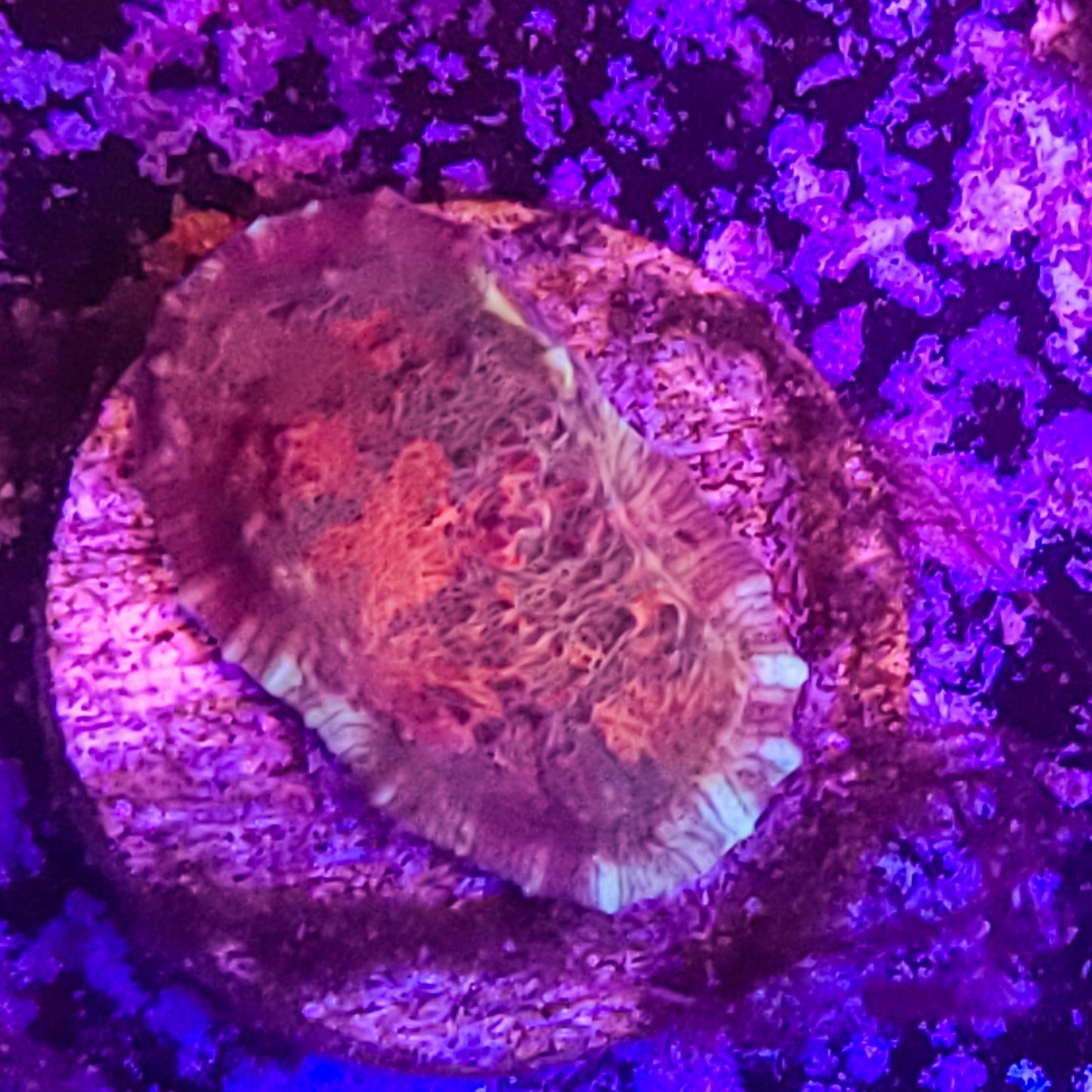Description
Review
FAQ
Chalice form plates and comprise a wide range of corals including Echinopora, Oxypora, and Mycedium. Chalice are large polyp stony corals (LPS). What attracts many hobbyist to Chalice are their wide range of colors and patterns. They vary from one basic color to brilliant art pieces with many colors that can appear fluorescent and iridescent.
Chalices tend to like moderate to lower light levels, probably around 100 PAR. If you’re not sure where to put a Chalice, start in a lower darker part of your tank and see how it does. Chalice can adapt to different lighting levels, but avoid too much light. If you move the Chalice to a brighter location or increase the light level, there is a risk that it will do poorly and my start to bleach. The important thing is go slow and see how it goes.
Water flow is best kept moderate. You don’t want the flow so low that detritus starts ending on the Chalice. Too much flow risks blowing the Chalice around your tank as it is a plating coral.
Chalices are aggressive. So give them some distance to other coral. Only some types have sweeper tentacles, but they can kill coral set too close. So, give them a couple of inches of breathing room.
Chalice are photosynthetic coral gaining most of their food from their symbiotic relationship with zooanthellae living in the coral. That said, Chalice can feed from other food particles in the water. Generally, fish food and its resulting byproducts will do the trick. If you have a coral only tank, or very few fish, you may want to put some zooplankton and/or frozen mysis shrimp in the water every week or so. The particles will land on the Chalice and its mucus coat will catch these particles and pull them into their mouths. A little trial and error is warranted to find out what does best with your Chalice.
If you want to frag your Chalice, that is not hard to do. The one caution is that the mucus and other material given off as you frag can harm another coral that you might be fragging. So, clean your tools between fragging of different coral pieces.
This is a picture of the exact piece of coral you will receive (WYSIWYG).
Description
Chalice form plates and comprise a wide range of corals including Echinopora, Oxypora, and Mycedium. Chalice are large polyp stony corals (LPS). What attracts many hobbyist to Chalice are their wide range of colors and patterns. They vary from one basic color to brilliant art pieces with many colors that can appear fluorescent and iridescent.
Chalices tend to like moderate to lower light levels, probably around 100 PAR. If you’re not sure where to put a Chalice, start in a lower darker part of your tank and see how it does. Chalice can adapt to different lighting levels, but avoid too much light. If you move the Chalice to a brighter location or increase the light level, there is a risk that it will do poorly and my start to bleach. The important thing is go slow and see how it goes.
Water flow is best kept moderate. You don’t want the flow so low that detritus starts ending on the Chalice. Too much flow risks blowing the Chalice around your tank as it is a plating coral.
Chalices are aggressive. So give them some distance to other coral. Only some types have sweeper tentacles, but they can kill coral set too close. So, give them a couple of inches of breathing room.
Chalice are photosynthetic coral gaining most of their food from their symbiotic relationship with zooanthellae living in the coral. That said, Chalice can feed from other food particles in the water. Generally, fish food and its resulting byproducts will do the trick. If you have a coral only tank, or very few fish, you may want to put some zooplankton and/or frozen mysis shrimp in the water every week or so. The particles will land on the Chalice and its mucus coat will catch these particles and pull them into their mouths. A little trial and error is warranted to find out what does best with your Chalice.
If you want to frag your Chalice, that is not hard to do. The one caution is that the mucus and other material given off as you frag can harm another coral that you might be fragging. So, clean your tools between fragging of different coral pieces.
This is a picture of the exact piece of coral you will receive (WYSIWYG).
Review
FAQ


